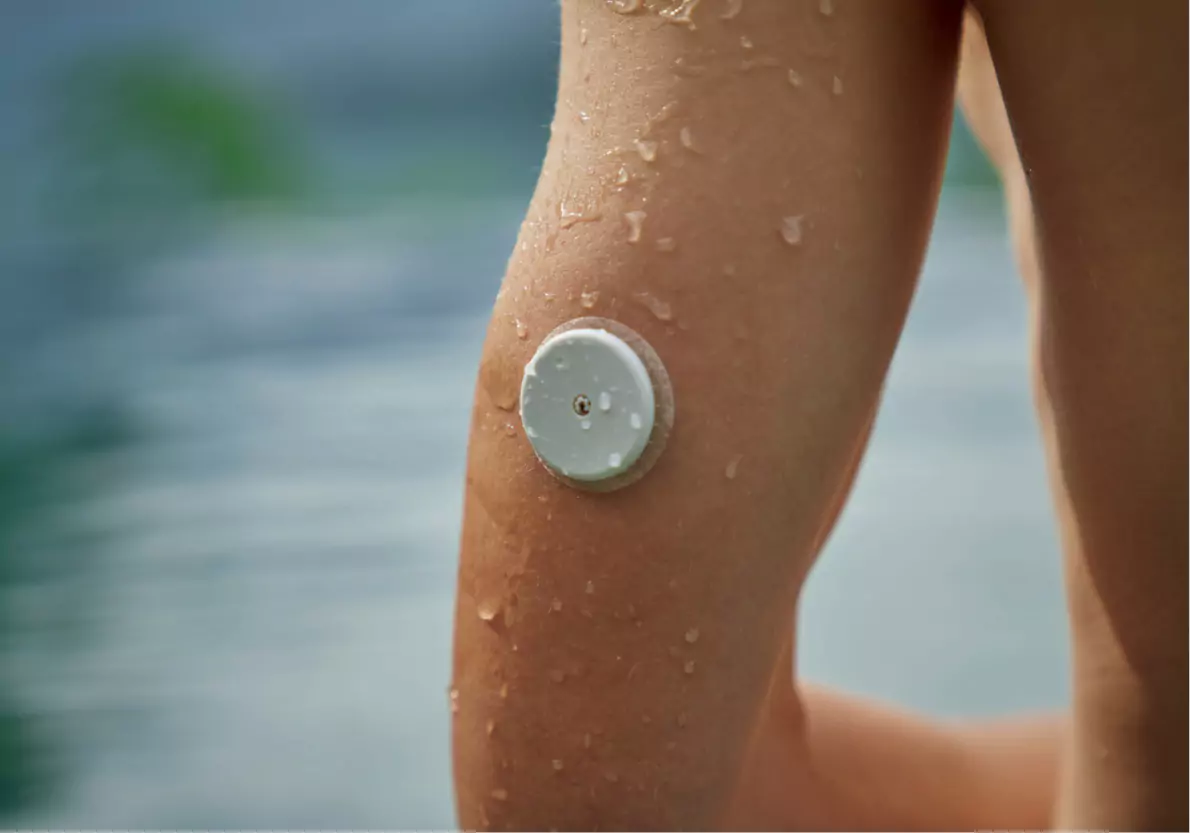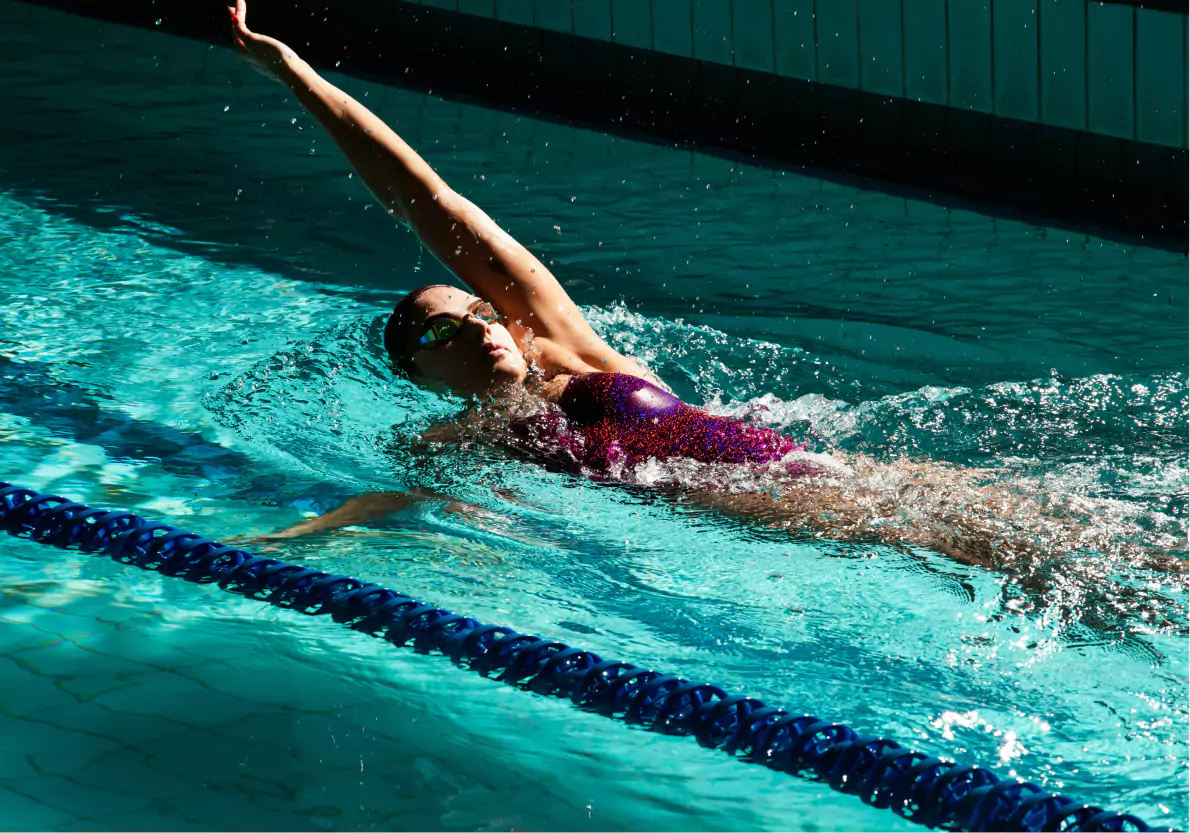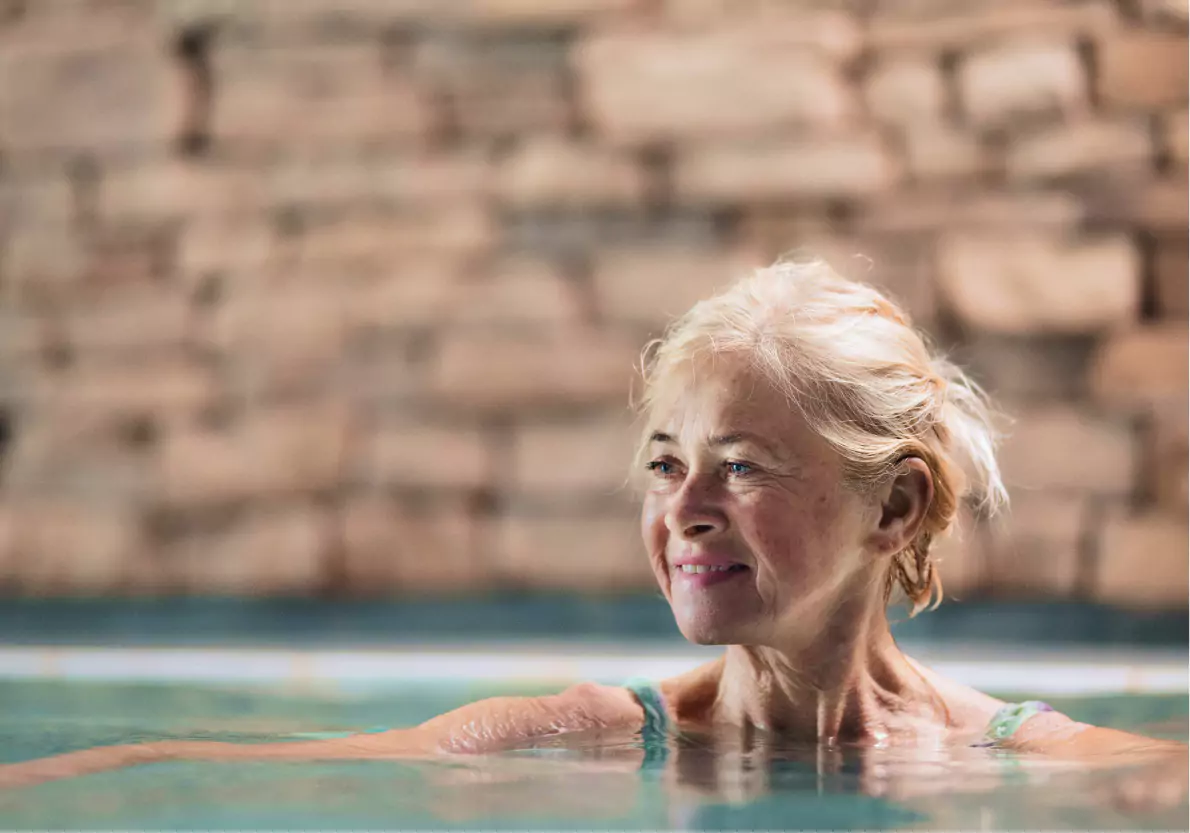Can You Swim With a CGM: Tips and Advice

Key Takeways
If you’re like most of the population, you may love cooling off by spending time in the pool, waterpark, or at the beach during the summer months. It’s a great way to keep your body moving, get your vitamin D, and spend time with your loved ones.
But if you’re already using a continuous glucose monitor or plan to start using one soon, you may be wondering whether you can still swim with a CGM or glucose biosensor. The short answer is: yes, you can. This is one of the many benefits of modern CGM tech!
In this article, we’ll walk you through a few considerations to keep in mind when using your CGM around water.
Are CGMs Waterproof?
Continuous glucose monitors and glucose biosensors have come a long way, and most of them are water resistant. This is great news for people with type 1 or type 2 diabetes, but also those managing prediabetes, or anyone who wears a CGM or glucose biosensor to keep an eye on their glucose levels. It’s now easier than ever to do that with these water resistant devices.
However, there are certain caveats to be aware of and conditions that may cause your device to malfunction. This is especially important to consider if you plan on dipping more than just your feet into the water or if you are a regular swimmer.
Which CGM Providers Have Water Resistant Devices?

The two of the most popular prescription CGM sensors are the Dexcom G7 CGM and the FreeStyle Libre 3 CGM. Each sensor has certain restrictions when it comes to water, so let’s take a closer look.
FreeStyle Libre 3 Sensor
The FreeStyle Libre 3 sensors released last year—you can access them with the Nutrisense CGM Program. These sensors are waterproof up to three feet in water. You can wear these CGMs in the shower or swimming in the pool.
While it’s not clear how this sensor functions when exposed to salt water, you may risk causing the device to malfunction, which can lead to lost glucose tracking data. Because of this risk, you’ll want to minimize how often your CGM is exposed to salty water. When swimming, make sure to cover your monitor with the waterproof bandage provided (if you haven’t already). Remember, always read the instructions that come with your device as some nuances differ per manufacturers and models when it comes to CGMs.
Dexcom G7 Sensor
There are a few different models of Dexcom CGMs that have unique water limitations. For example, Dexcom G4 sensors are water resistant, but their transmitters and receivers are not.
The G5 and G6 sensors, however, are different models. The receiver for these devices is also not water resistant, though they do have water resistant transmitters. These CGMs are water resistant for up to eight feet under water for 24 hours.
The latest sensor, the Dexcom G7, is is waterproof up to 8 feet and can be submerged for up to 24 hours without failure when properly installed.
Dexcom also recommends covering the CGM with a waterproof bandage to protect it from water damage.
There are also non-prescription glucose biosensors like The Stelo Glucose Biosensor, which can be immersed up to 8 feet (2.4 meters) for up to 24 hours.
Swimming for Metabolic Health

As we explained in our article on swimming and your health, this activity can have number of health benefits. Luckily, you can still get in a refreshing pool workout while wearing your CGM. Like any form of physical activity, swimming has the potential to help you maintain ideal blood sugar levels.
To get the most out of the time you spend in the pool, you may want to focus more on moderate to intense swimming. This can help you get your heart rate up, strengthening your cardiovascular health and building stamina.
Swimming can also help you build strength, improve lung function, and increase your resting metabolic rate. As a low-impact exercise, it’s also been found to have minimal adverse effects.
Using a CGM for swimming can help you to ensure that you are fueling your body for exercise and recovering properly after training.
Considerations for Individuals with Diabetes
If you’re someone who has insulin resistance or diabetes, experiencing hyperglycemia, or high blood sugar levels is common. However, getting in regular endurance exercise such as swimming has been found to improve metabolic health in those with type 2 diabetes by helping with insights into blood sugar levels.
It’s important to keep in mind that exercise may affect individuals who have diabetes differently. These individuals may also experience hypoglycemia, or low blood sugar levels. If you want to participate in regular swimming and have type 1 diabetes or type 2 diabetes, you may want to take some additional caution, as exercise may cause your glucose levels to drop.
Low blood sugar can be harmful, and even life threatening if not addressed. You should also talk to your healthcare professional about what to do in the case of low blood sugar. One option for low blood sugar may include using insulin pumps (waterproof ones like Medtronic), bolus, or basal insulin. There are also a number of things you can do to boost your low blood sugar at home.
Can Swimmers Benefit from Glucose Monitoring?

While continuous glucose monitors were originally developed for individuals with diabetes, continuous glucose monitoring now benefits a variety of purposes. Athletes such as endurance runners, weight lifters, and swimmers are one group that can collect interesting insights about their blood sugar levels.
Athletes such as swimmers may require a substantial amount of carbohydrates and protein in their diet to give them energy for training and keep their bodies strong. If you’re a swimmer, it may be useful to track glucose levels around training to understand more about whether you’re consuming enough of each macronutrient for your activity level.
With a continuous glucose monitor you can view how your blood sugar responds to the foods you fuel your body with. You can also observe how high intensity efforts affect your glucose levels and whether or not eating carbohydrates before or after your workout affects how you feel.
Tips for Swimming With a CGM

Whether you’re a casual swimming, triathlete, or open water swimmer, you can gather insights about your body’s glucose response while swimming with a CGM by taking a few precautions. Here are a few final tips from our dietitian team here at Nutrisense to help you swim with your CGM.
1) If you’re worried about your CGM falling off or becoming damaged while you’re in the pool, remember to keep it covered with a water resistant bandage or armband.
2) I would suggest adding on the self-adhesive wrap for your training sessions in and out of the water to prevent the sensor from popping off. It doesn't happen often, but it happens more when working out.
3) You can also use these adhesive wipes. You can use this wipe on your skin before putting on the CGM for an extra layer of stickiness which can also help if you live an active lifestyle.
Find the right Nutrisense programto turn insight into progress.
Go Beyond Glucose Data with Nutrisense
Your glucose can significantly impact how your body feels and functions. That’s why stable levels are an important factor in supporting overall wellbeing. But viewing glucose isn't enough. Nutrisense, you’ll be able to learn how to use your body's data to make informed lifestyle choices that support healthy living.
One-to-one coaching
Sign up to access insurance-covered video calls to work with a glucose expert: a personal registered dietitian or certified nutritionist who will help tailor your lifestyle and diet to your goals.
Monitor and measure what matters
With the Nutrisense CGM Program, you can monitor your glucose with health tech like glucose biosensors and continuous glucose monitor (CGM)s, and analyze the trends over time with the Nutrisense App. This will help you make the most informed choices about the foods you consume and their impact on your health.
Find your best fit
Ready to take the first step? Start with our quiz to find the right Nutrisense program to help you take control.

Heather is a Registered and Licensed Dietitian Nutritionist (RDN, LDN), subject matter expert, and technical writer, with a master's degree in nutrition science from Bastyr University. She has a specialty in neuroendocrinology and has been working in the field of nutrition—including nutrition research, education, medical writing, and clinical integrative and functional nutrition—for over 15 years.



.png)
